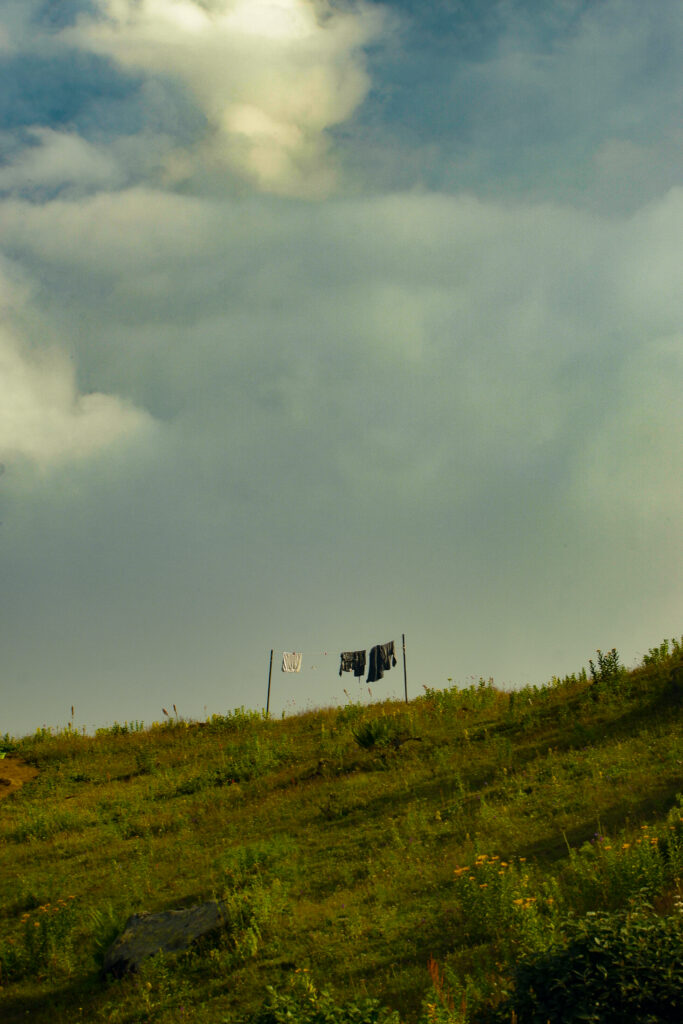Imagine coming home after a long day to find your house flooded due to a burst pipe. The panic and stress can be overwhelming, but fear not! We, Water Damage Restoration Port St. Lucie, are here to help you restore your home to its former glory. With our expert team of professionals and state-of-the-art equipment, we are dedicated to providing the best water damage restoration services in Port St. Lucie and beyond. From extracting standing water to drying and dehumidifying the affected areas, we have the knowledge and expertise to handle any water damage situation. Don’t let water damage ruin your day – trust us to get your home back to normal in no time!
Water Damage Restoration Port St. Lucie
Welcome to the comprehensive guide on water damage restoration in Port St. Lucie! In this article, we will walk you through all the important aspects of water damage restoration, including its definition, causes, the importance of immediate response, the restoration process, and the final inspection. So, let’s dive right in!
Understanding Water Damage Restoration
Water damage restoration refers to the process of repairing and restoring a property that has been damaged by water. This can include everything from minor leaks to severe flooding. By addressing the damage promptly, professionals can prevent further deterioration and ensure the safety and stability of the structure.
To understand water damage restoration better, let’s explore its different types. Water damage can be classified into three categories: clean water damage, gray water damage, and black water damage. Clean water damage is caused by burst pipes or overflowing sinks and poses no immediate health risks. Gray water damage refers to water that may contain contaminants and can come from sources like dishwashers or washing machines. Finally, black water damage is highly contaminated and often results from sewage backup or natural disasters.
Water damage can manifest itself in a range of signs. These signs include water stains, peeling paint or wallpaper, a musty odor, warped or sagging walls, and visible mold growth. It is crucial to recognize these signs early on to address the issue promptly and prevent further damage.
Causes of Water Damage
Water damage can be caused by various factors. Let’s take a look at some of the most common causes:
-
Natural Disasters (Floods, Storms): Severe weather events like floods or storms can cause significant water damage to homes and properties. Proper preparation and efficient water damage restoration measures are necessary to mitigate the effects of such disasters.
-
Plumbing Issues: Burst pipes, leaking faucets, or faulty plumbing fixtures can cause water damage. It is essential to address these issues promptly to prevent further damage and wasting valuable resources.
-
Appliance Malfunctions: Malfunctioning appliances such as dishwashers, washing machines, or water heaters can lead to water damage if not properly maintained or repaired.
-
Roof Leaks: Damaged or poorly maintained roofs can allow water to penetrate into the structure, causing extensive damage to walls, ceilings, and belongings.
-
Sewage Backup: A sewage backup is a highly hazardous situation that can inundate a property with contaminated water, posing severe health risks. Immediate action and professional assistance are crucial in such cases.
The Importance of Immediate Response
When faced with water damage, time is of the essence. Acting promptly can make all the difference. Here’s why immediate response is crucial:
-
Preventing Further Damage: Time is a critical factor in preventing water damage from spreading and causing more extensive harm. The longer water is left standing, the greater the risk of structural damage and mold growth.
-
Minimizing Health Risks: Water damage can create a breeding ground for mold, bacteria, and other pathogens. Promptly addressing the issue can minimize health risks for you and your family.
-
Preserving Valuables: Water damage can ruin precious belongings and sentimental items. Fast action can help salvage and restore your belongings, protecting your memories and reducing financial losses.
-
Mitigating Mold Growth: Mold can start growing within 24-48 hours after water damage occurs. By initiating the restoration process quickly, you can prevent mold from spreading and causing further destruction.
Water Damage Restoration Process
The water damage restoration process consists of several essential steps. Let’s go through each step in detail:
Assessment and Inspection
The first step in the restoration process is to assess and inspect the extent of the damage. Professionals will evaluate the affected areas, determine the classification of the water damage, and identify the source of the water. This step helps create a roadmap for the restoration process.
Water Extraction and Drying
Once the assessment is complete, the next step is to remove standing water from the property. Professionals will use specialized equipment, such as pumps and extractors, to efficiently and thoroughly extract the water. Afterward, drying equipment such as dehumidifiers and air movers will be strategically placed to evaporate any remaining moisture.
Mold Remediation
In cases where mold growth is present, mold remediation becomes a crucial part of the restoration process. Professionals will identify the mold-affected areas, contain the mold to prevent further spread, remove the mold safely, and clean and sanitize the affected surfaces. Taking preventive measures to avoid future mold growth is also essential.
Structural Repairs
Once the property is thoroughly dried and free from mold, the focus shifts to repairing any structural damages caused by the water. This could involve repairing walls, replacing flooring, restoring ceilings, fixing plumbing issues, and even addressing roof leaks. Every effort is made to restore the property to its pre-damaged condition.
Content Restoration
The restoration process not only involves repairing the structure but also salvaging and restoring your personal belongings. Professionals will assess the damage to belongings such as furniture, electronics, documents, and artwork. Specialized techniques and equipment will be used to restore these items whenever possible.
Final Inspection and Testing
After the restoration work is complete, a final inspection and testing will be conducted. This step ensures that all the necessary repairs have been made, there is no remaining moisture, and the air quality is safe and healthy.
By following this comprehensive restoration process, professionals can help you rebuild and restore your property after water damage efficiently and effectively.
Assessment and Inspection
Assessment and inspection play a crucial role in the water damage restoration process. Let’s explore the key aspects of this step:
Visual Inspection
Professionals will visually assess the affected areas, including walls, ceilings, floors, and belongings. They will look for visible signs of water damage, such as discoloration, warping, or mold growth. This visual inspection helps determine the extent of the damage and guides further actions.
Moisture Detection
In addition to visual inspection, professionals will use specialized moisture detection equipment to identify hidden pockets of moisture. Moisture meters, thermal imaging cameras, and hygrometers are some of the tools used to accurately measure moisture levels. This step ensures that no moisture is left behind, as even a small amount can lead to further damages and mold growth.
Structural Analysis
During the assessment, professionals will also analyze the structural integrity of the affected areas. This analysis helps determine if any structural repairs are required and ensures the safety and stability of the property. Identifying any underlying issues early on is essential to prevent future problems.
Water Extraction and Drying
The efficient removal of standing water and thorough drying of the property are critical steps to prevent further damage. Let’s explore the various aspects of this stage:
Water Extraction Techniques
To remove standing water, professionals will use specialized equipment such as pumps, extractors, and vacuums. The choice of technique depends on the volume and severity of the water damage. The goal is to remove water as quickly as possible to minimize damage and prevent mold growth.
Drying Equipment
Once the standing water is removed, professionals will set up drying equipment to eliminate any remaining moisture. Dehumidifiers extract moisture from the air, while air movers promote airflow and evaporation. These devices work together to accelerate the drying process and prevent mold growth.
Dehumidification
In addition to the use of dehumidifiers, professionals may also employ desiccant dehumidifiers, which absorb moisture from the air more effectively. These dehumidifiers use specially designed materials to remove excess moisture, promoting a quicker and more thorough drying process.
By employing advanced water extraction techniques and utilizing effective drying equipment, professionals can restore the optimal moisture levels in the property, preventing further damage and the growth of mold and mildew.
Mold Remediation
When water damage is left unaddressed, it can lead to mold growth. Mold remediation is a crucial step in the restoration process. Let’s explore how it is conducted:
Identifying Mold Growth
Professionals will visually identify mold growth and assess its extent in the affected areas. They will look for visible signs of mold, such as discoloration, fuzzy patches, or a musty odor. Mold growth often occurs in hidden or hard-to-reach areas, so thorough inspection is vital.
Containment and Removal
To prevent the spread of mold spores, professionals will set up containment barriers and negative air pressure systems. This ensures that mold is confined to the affected areas during the removal process. Protective equipment, including gloves, masks, and suits, will be worn to minimize exposure and prevent cross-contamination.
During the removal process, mold-infested materials will be safely discarded, and affected surfaces will be thoroughly cleaned. HEPA vacuums and antimicrobial solutions are commonly used to eliminate mold and prevent regrowth.
Cleaning and Sanitization
After the mold has been removed, affected surfaces will be cleaned and sanitized to ensure a safe and healthy environment. Professionals will use specialized techniques and products to eliminate any remaining mold spores or contaminants. This step is crucial in preventing future mold growth and ensuring the well-being of the occupants.
Preventing Future Mold Growth
To prevent future mold growth, professionals may recommend measures to address the underlying causes of the water damage. This can include addressing plumbing issues, improving ventilation, or implementing better moisture control. By addressing these contributing factors, the risk of future mold growth is minimized.
By effectively identifying, containing, removing, and preventing mold growth, professionals can ensure the long-term safety and health of your property.
Structural Repairs
Water damage can cause structural harm to your property. Let’s explore the various aspects of structural repairs in the restoration process:
Repairing Damaged Walls
Water-damaged walls can become weakened, warped, or stained. Professionals will assess the extent of the damage and repair any compromised areas. This can involve replacing damaged drywall, applying sealants to prevent further moisture penetration, and repainting the walls to restore their appearance.
Replacing Flooring
Water-damaged flooring can be a breeding ground for mold and significantly impact the aesthetic appeal of your property. Professionals will assess the damage and recommend appropriate actions. This can involve removing and replacing the damaged flooring materials, such as carpet, laminate, or hardwood, to restore the integrity and appearance of the floors.
Restoring Ceilings
Ceilings are particularly vulnerable to water damage, as gravity causes water to accumulate and seep through. Professionals will assess the extent of damage to the ceilings and take the necessary steps to repair and restore them. This can include repairing or replacing damaged ceiling tiles, repairing water stains, and ensuring structural integrity.
Fixing Plumbing Issues
Water damage caused by plumbing issues requires addressing the underlying problems. Professionals will identify and repair any leaks, burst pipes, or faulty fixtures to prevent future water damage. It is crucial to address plumbing issues promptly to avoid recurring water damage and costly repairs.
Roof Repair
Roof leaks can lead to significant water damage if not addressed promptly. Professionals will assess the damage to the roof and its components, such as shingles, flashing, or gutters. Repairing or replacing damaged materials, reinforcing the structure, and ensuring proper sealing are essential steps in restoring a water-damaged roof.
By addressing the structural issues caused by water damage, professionals can restore the integrity and safety of your property.
Final Inspection and Testing
The final step in the water damage restoration process is conducting a thorough inspection and testing. Let’s delve into the details:
Ensuring Complete Restoration
During the final inspection, professionals will meticulously examine the restored areas to ensure that all necessary repairs have been made. They will check for any residual signs of water damage, mold growth, or structural issues. This step ensures that your property is fully restored and free from any lingering problems.
Testing for Moisture
To ensure that all moisture has been effectively eliminated, professionals will conduct moisture testing. Moisture meters and hygrometers will be used to measure the moisture content in the affected areas. Any remaining moisture can lead to mold growth or other forms of damage, so detecting and addressing it is crucial.
Air Quality Testing
Air quality testing is performed to ensure that the property’s environment is safe and healthy. Professionals will collect air samples and analyze them for the presence of mold spores or other contaminants. This step helps evaluate the effectiveness of the restoration process, ensuring that the air quality is restored to acceptable levels.
By conducting a thorough final inspection and testing, professionals can provide you with the confidence that your property has been completely restored and is safe to inhabit.
In conclusion, water damage restoration is a comprehensive process that involves assessment, extraction, drying, mold remediation, structural repairs, content restoration, and final inspection. Immediate response is crucial to prevent further damage, health risks, and mold growth. By understanding the causes and signs of water damage, you can take prompt action and engage professionals to restore your property efficiently. With their expertise and specialized equipment, professionals can mitigate the effects of water damage and restore your home or business to its pre-damaged condition. Remember, when facing water damage, time is of the essence, so don’t hesitate to seek professional assistance for timely and effective restoration. Stay proactive, and protect your property from the devastating effects of water damage!






